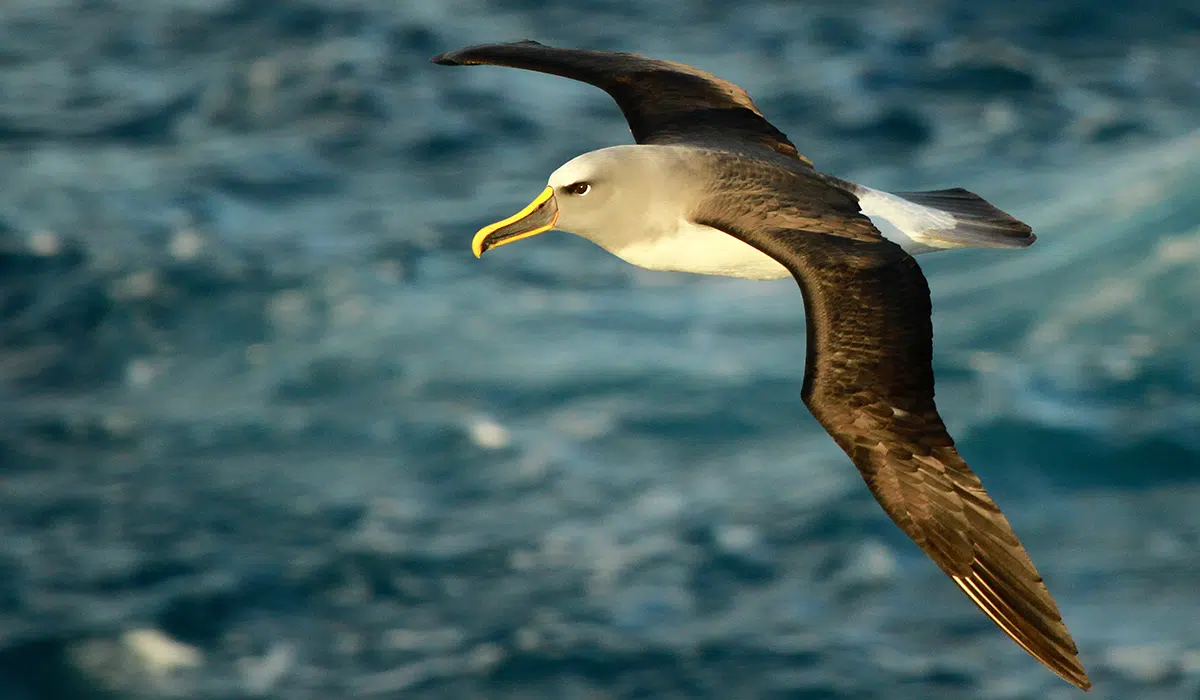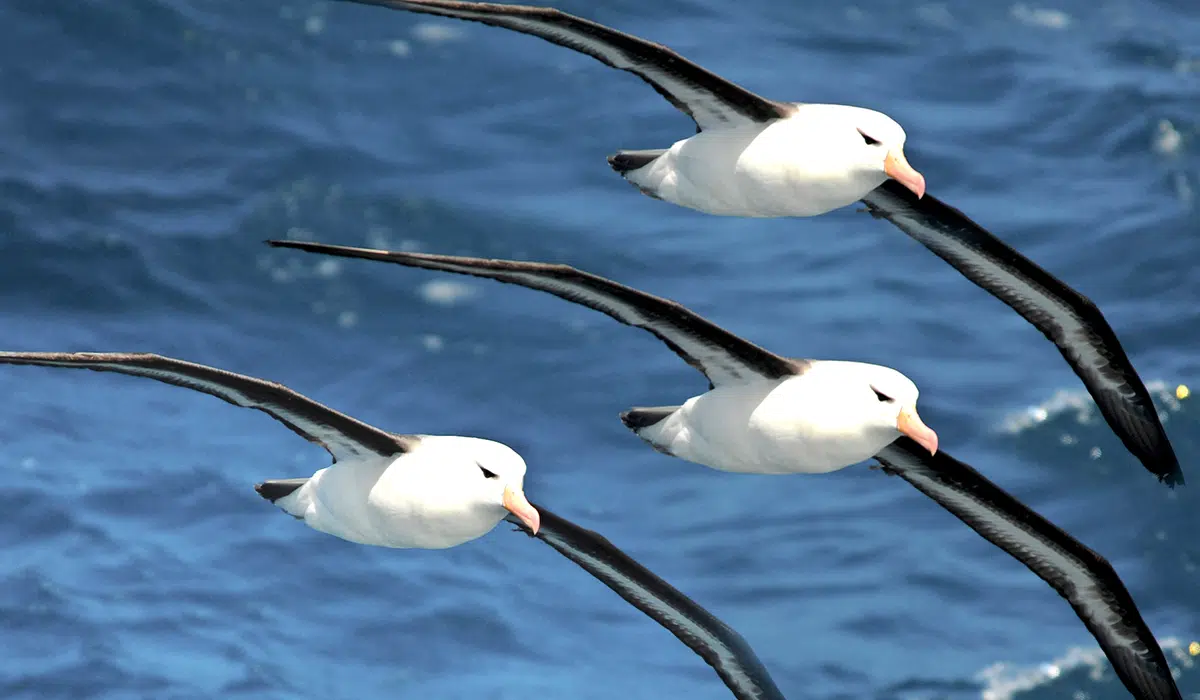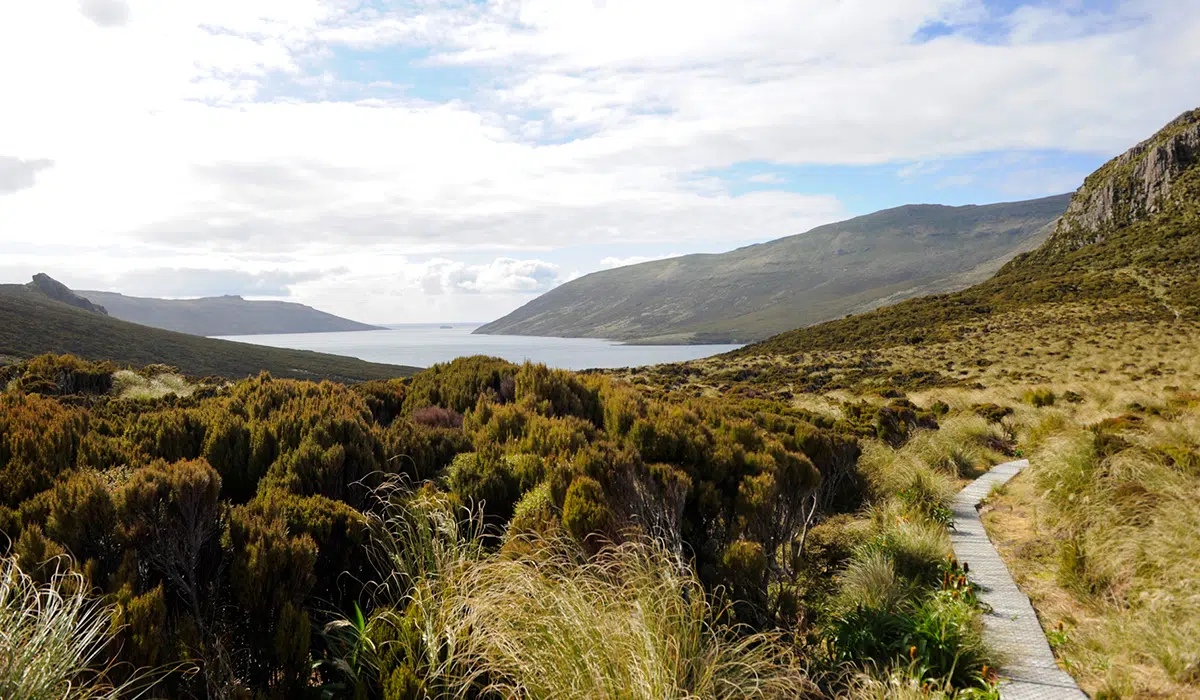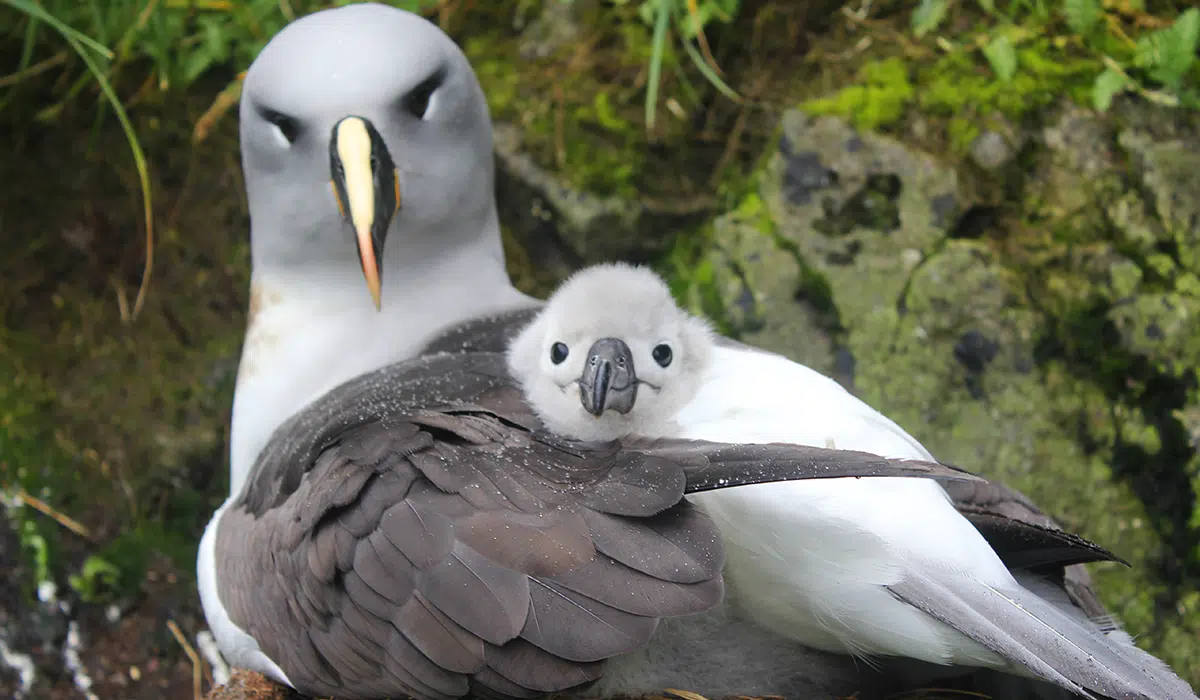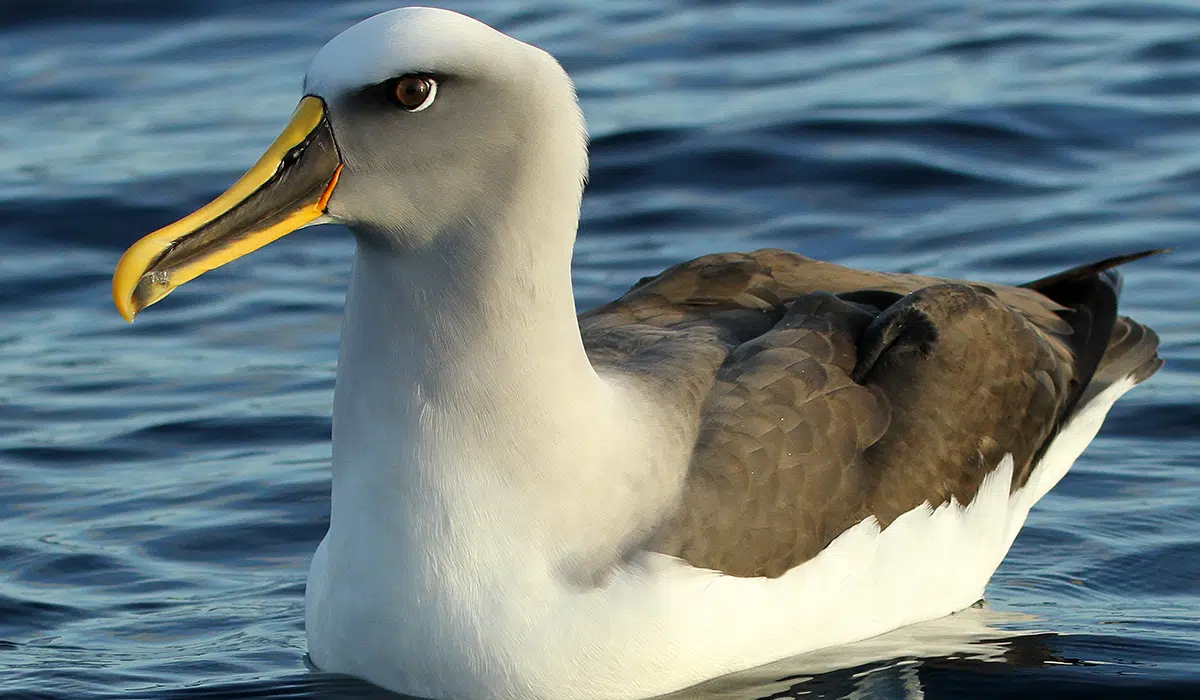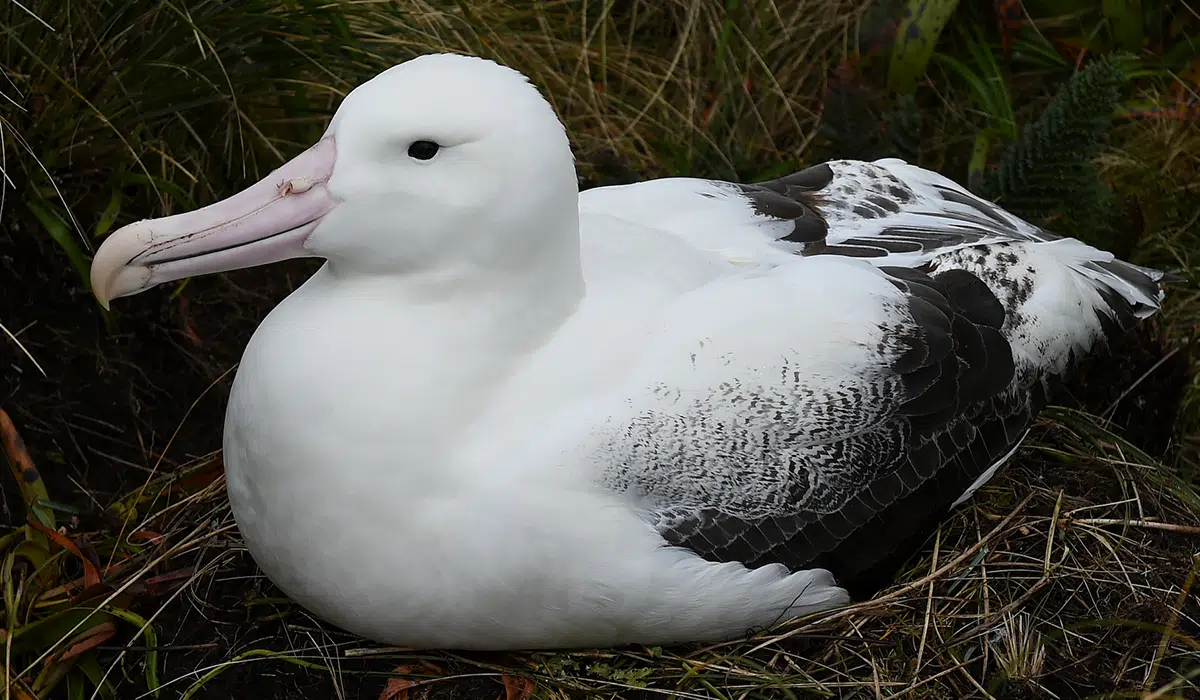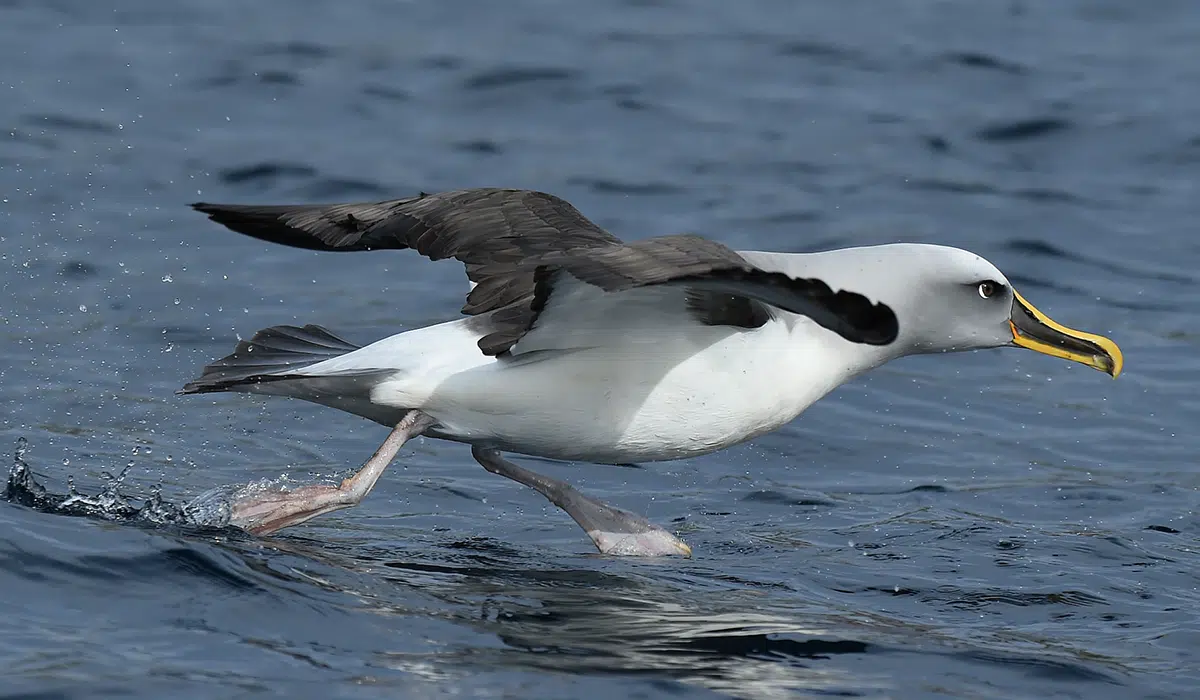Sandrine Erwin-Rose discusses the importance of protecting this iconic endangered species
Sandrine Erwin-Rose, Expedition Operations Manager for PONANT Asia Pacific, introduces us to the Albatross and discusses Albatross Conservation efforts taking place on the Subantarctic Islands of Australia and New Zealand and why it is so important.

What species of Albatross are found in the Subantarctic Islands of Australia and New Zealand and where can we find them?
Albatrosses are pelagic seabirds which breed predominantly on remote islands and travel enormous distances during foraging flights and migratory journeys. They can often be seen far from land, catching the up-drafts of wind above the waves for extra lift and gliding effortlessly between the rolling waves of the Southern Ocean. Twenty of the world’s twenty-two species of albatrosses can be found in the Southern Hemisphere, with fourteen species found in the Subantarctic Islands and twelve of these breeding on a number of the islands.
Macquarie Island is the breeding ground of the Black-browed, Grey-headed, Light-mantled, Shy and Wandering Albatrosses; the Auckland Islands have the Shy, Auckland Wandering (Gibson’s), Light-mantled Sooty and Southern Royal Albatrosses; the Snares have the Buller’s, Salvin’s and Black-browed Albatrosses; Campbell Island has the Campbell, Southern Royal, Grey-headed, Light-mantled Sooty, Black-browed and Antipodean Albatrosses; the Bounty Islands have the Salvin’s Albatross while the Antipodes Islands have the Antipodean, Light-mantled Sooty, Black-browed and Shy Albatrosses.
Albatrosses only return to land to breed every two to three years where they find their mate, re-enforce their pair bond through ritualised courtship displays, mate and then lay and incubate their single egg. In the early stages of the chick’s development the parents take turns sitting on the nest while the other forages for food, far out to sea. Later both parents will be out at sea and the chick will stay on the nest waiting, sometimes weeks, for a parent to return with food. Chicks fledge at around ten months of age and will not return for between five to ten years to start breeding themselves. Nests are made of mud and can be seen perched precariously on the rocky escarpments of the Auckland and Macquarie Islands or in the tussocks of Campbell Island, exposed to the wind of the Southern Ocean, which the adult birds require to be able to take flight.
What are some of the threats to Albatrosses and what is being done to reduce these?
Sadly, albatrosses are one of the world’s most threatened groups of birds with fifteen of the twenty-two species considered ‘Vulnerable or Endangered’. Threats to albatrosses come from both the sea and land which reduce their survival and thus their capacity to reproduce.
At-sea threats include fishing vessels which unintentionally catch the birds in their nets or with baited hooks, as well as intentional shooting, competition for food or discards from fishing vessels, dependence on fishing discards, marine pollution and climate change. Land-based threats include human disturbance, parasites and diseases, loss of nesting habitat, competition for nest space, and lastly, introduced species on the islands where they breed.
Longline fishing represents a significant, and possibly, the primary at-sea threat to albatross populations. Each year thousands of albatrosses are accidently killed (termed ‘bycatch’) when the birds are attracted to fishing vessels and ingest baited hooks and either drown or, if released, later die due to injuries from the hooks. Australian and New Zealand authorities working with the Commission for the Conservation of Antarctic Living Resources (CCAMLR) have implemented measures to reduce the number of albatross accidently killed by fishing boats. These include limiting the number of vessels permitted in sensitive areas (e.g. Macquarie Island) and putting in place maximum ‘bycatch’ rates, where if bycatch limits for a particular vulnerable species are reached, the longline fishing vessel must cease operations for the season. In addition, vessels are required to adopt bycatch mitigation measures such as weighted longlines, no discarding of non-target fish bycatch and other discards overboard, use of deterrent devices during line operations, no setting of lines at night, as well as independent scientific observers on board.
All these measures are important in reducing the deaths of albatross within Australian and New Zealand waters, however due to the enormous distances these birds travel, the involvement of other nations where the birds visit is paramount. The Agreement on the Conservation of Albatrosses and Petrels (ACAP) was formed in 2001 and now has thirteen countries (parties) who together strive to conserve albatrosses and petrels through coordinating international activities to reduce the threats to populations, however much research is still needed to have a better understanding of these birds’ biology and ecology in order to better protect them. In addition, non-government organisations such as the Antarctic and Southern Ocean Coalition, New Zealand-based Southern Seabird Solutions Trust, and the Tasmanian Albatross Fund are also important in supporting ongoing research and the protection of seabirds such as albatrosses.
The greatest threat to albatrosses on land are feral or introduced pests, in particular mice, rats, cats and pigs which prey on the eggs, chicks and adults. Rabbits also damage vegetation which leads to erosion and thus increases the risk of the albatrosses’ exposure to their predators as well as the loss of nesting areas.
ACAP decided that the first World Albatross Day would be celebrated on the 19th June 2020 and after consideration of the main threats facing albatrosses, decided on the theme of ‘Eradicating Introduced Pests’ be chosen to highlight the continuing problem facing ACAP-listed species, many of which are threatened with extinction unless actions are taken. In the last twenty years New Zealand and Australia have invested and continue to invest, significant resources into the eradication of feral pests on the Subantarctic Islands which are important breeding grounds for albatrosses as well as penguins and many other birds. The islands including Macquarie, Campbell and the Antipodes Islands, after extensive work have been declared ‘pest-free’. On Macquarie Island, researchers who analysed Light-mantled, Grey-headed and Black-browed Albatross nesting data from the last two decades found that when rabbits were in high numbers, albatross breeding probability decreased between 33-76%. Wandering Albatross numbers which have also been declining appear to be making small headways, with 10 pairs nesting and six chicks hatching during the 2019/20 summer nesting season on Macquarie Island, the highest in over a decade! This research demonstrates the importance of pest-eradication on these remote islands due to their importance as breeding sites for these endangered birds.
The extensive work being done to protect these majestic albatrosses is necessary not only because they deserve to be protected, but also because the Southern Ocean and Subantarctic Islands, without the sight of these stunning birds catching the wind and gliding between the waves, would just not be the same and this is something that we do not ever want to imagine.
Photo credit: © Sandrine Erwin-Rose, Mick Fogg, Nathalie Michel, Margot Sib, Melanie Wells
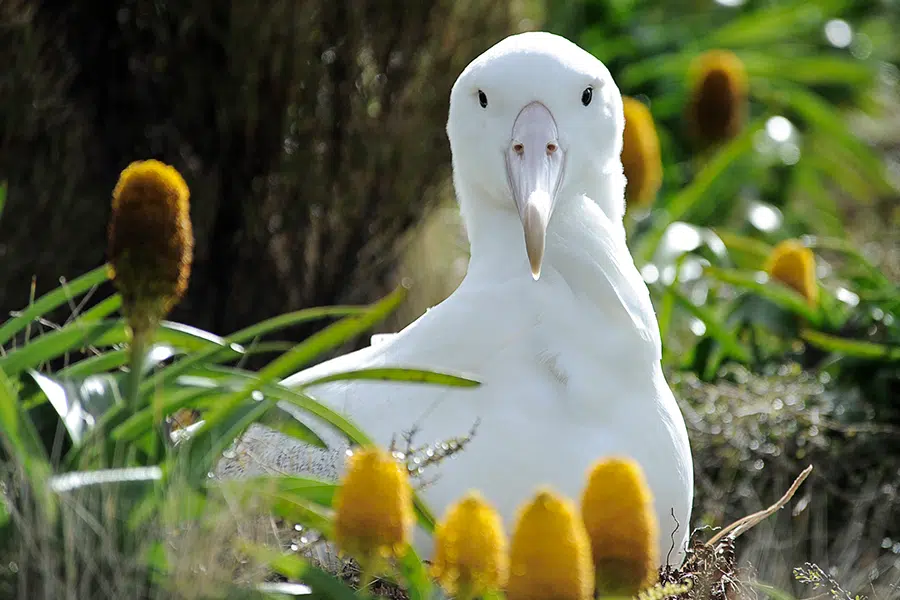
Get to know Sandrine
Sandrine Erwin-Rose is the Expedition Operations Manager for PONANT Asia Pacific. Working with PONANT since they first started sailing the Asia Pacific region nearly six years ago, Sandrine’s favourite part of her role is working as an Expedition Leader on board PONANT’s ships. Born in Corsica and immigrating to Australia as a young child, Sandrine later studied and gained an Honours Degree in Tropical Zoology, Ecology and Marine Biology followed by an Education degree. The Subantarctics is one of Sandrine’s favourite destinations so conservation of its wildlife and the protection of its natural environment is a subject close to her heart.

Our Subantarctic Island small- ship Expedition
Head down to see the albatross plus penguins, seals and sea lions for yourself


